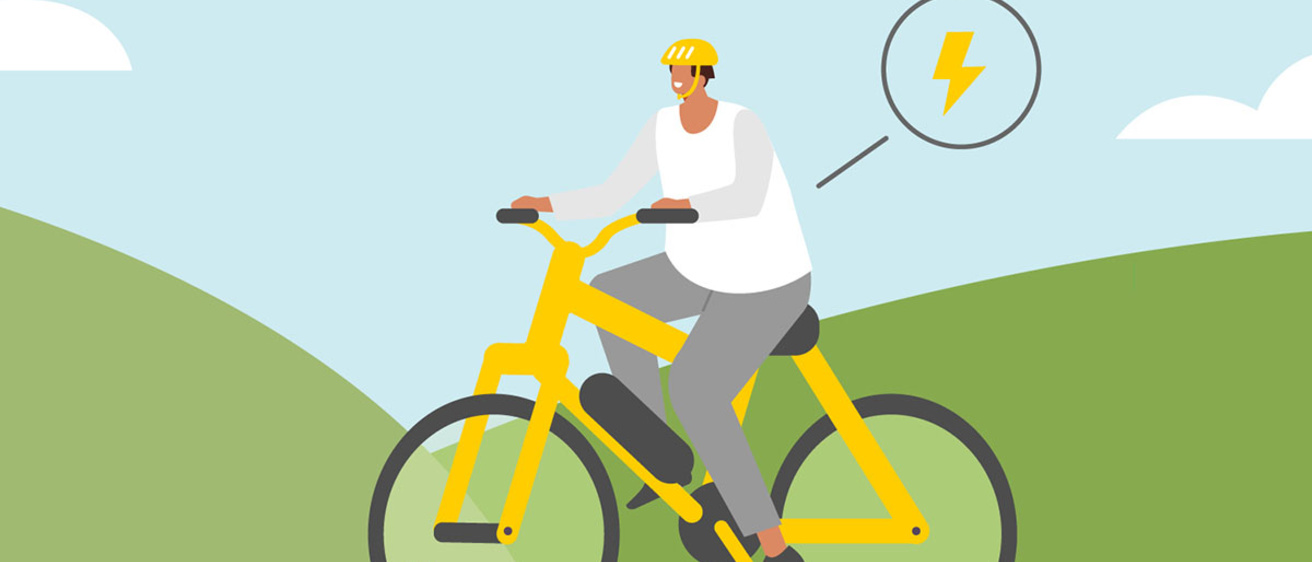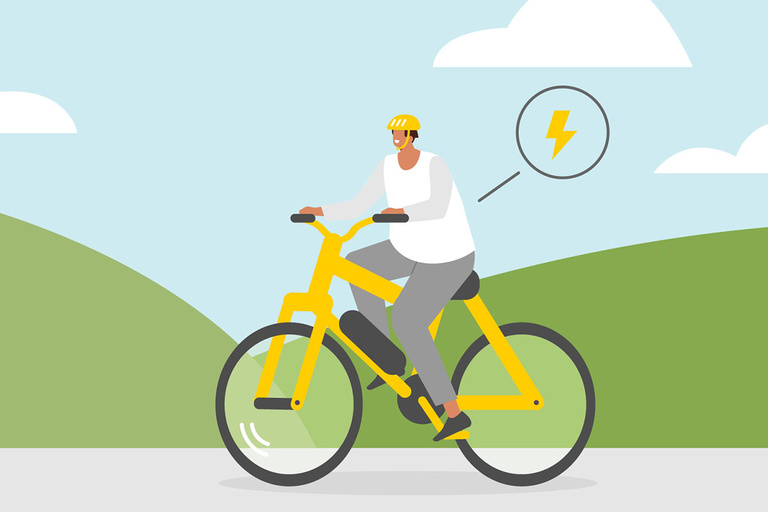Micro-mobility is increasingly becoming an option for people to get from point A to point B. You may not be familiar with the term, but you have likely seen the devices moving around the University of Iowa campus—electric bikes, skateboards, scooters, and other forms of e-wheels.
These e-transports can be convenient, cost-effective, and environmentally friendly. While they seem to be everywhere, they’re simultaneously being left in no man’s land.
Are they on-road or off-road vehicles? How fast can they move? Who has the right of way?
Cara Hamann, an assistant professor of epidemiology in the College of Public Health, and Sven Steen, a clinical assistant professor of Emergency Medicine at UI Hospitals & Clinics, recently offered their expertise on the topic on the Rounding@IOWA podcast, hosted by Gerard Clancy, senior associate dean in the Carver College of Medicine.
Here are some takeaways from that discussion, as well as some safety and logistical information to consider before jumping into the micro-mobility scene.
HEALTH BENEFITS
More people are catching the bike bug since e-bikes hit the market. Shifting out of cars and onto a bike increases your physical activity, and the benefits apply to people all ages. Even with an e-assist, most e-bikes require the cyclist to pedal, so riders are still putting forth effort like a conventional bicycle. Many e-bikes allow the rider to control the amount of assistance they receive and the amount of effort they would like to put into pedaling.
THE GREEN MACHINE
There is an environmental benefit to e-bikes when choosing the e-ride over cars on short trips. Trading one for the other can help eliminate greenhouse gas emissions that can add up over time.
SAFETY FIRST
E-bikes allow the rider to go faster than they may typically travel on a conventional bicycle, and higher speeds can lead to more severe injuries in the event of a crash. Helmets, lights, and reflective clothing are essential parts of safe riding for e-bikes and conventional bicycles alike. Riders also need to be cautious of their road mates, as drivers have been found to misjudge e-bike speeds and may pull out in front of an e-cyclist, leading to more collisions or near crashes.
TECHNOLOGY IS OUTPACING POLICY
We all need to be respectful and patient as we share the road while policy and infrastructure catch up to technology. If you’re an active and passionate e-rider, practice good safety and consider urging policymakers to enact policy that accounts for e-bikes and e-scooters in infrastructure planning and traffic laws.
KNOW YOUR BOUNDARIES
Iowa law allows e-bikes to operate on roadways, bike lanes, and bike paths, but they should not be ridden on the sidewalk. Riders should also operate under the posted speed limit and be familiar with the laws of the road.
PROTECT YOUR PROPERTY
Familiarize yourself with rules and regulations and know how to secure your property. You might think your e-bike is secure if the battery is removed. While that does prevent another person from riding off with your bike, it does not prevent them from stealing it and selling it to a third party. Value your bike and always secure it.

